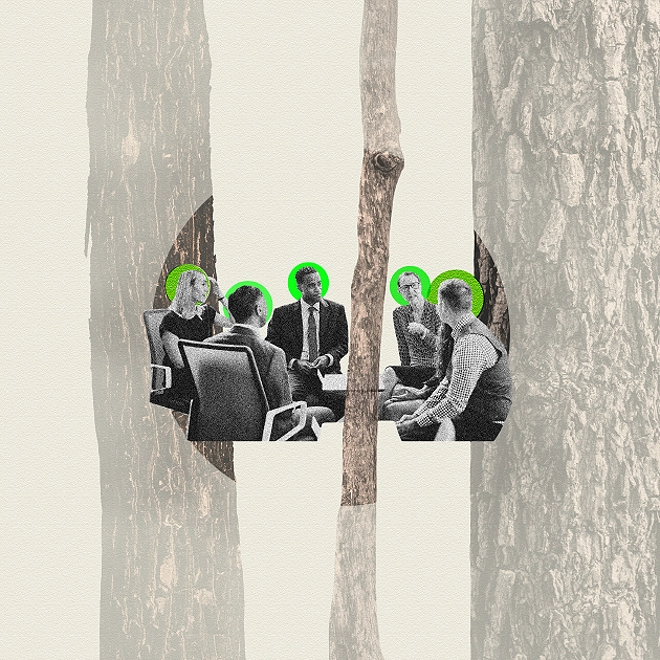Revisiting the great rethink
One year ago, we explored how Americans were rethinking their priorities in the wake of the global pandemic. How did shifts in consumer sentiment stand the test of time?
In the early fall of 2021, there was a brief window when some light seemed to shine at the end of a long pandemic tunnel. Cases were low. Omicron wasn’t on the radar yet. Restaurants were filling up again. Airports were bustling. It appeared as though Americans were snapping back to prepandemic life. But news headlines suggested something different.
Record numbers of people were quitting their jobs.1 Big cities were losing residents.2 Few were jumping at the idea of returning to the office full time.3 Large swathes of Americans were collectively making some big life choices. The amalgamation of trends was unofficially branded the great rethink—and it centered on the simple notion that society was unlikely to emerge from a two-year pandemic the same way it went in.
Back in September 2021, Deloitte’s Global State of the Consumer Tracker revealed compelling evidence of shifting sentiment (for a detailed analysis, see Is the world really going through some great rethink?). When asked to reflect on how they’ve changed over the past year, most Americans felt introspective—with people more focused on personal change and well-being (figure 1). Most felt they were recalibrating their work-life balance—prioritizing enjoying today over working harder to get ahead. And even as the pandemic seemed to be fading, most Americans still felt daily life was centered around their homes.

A rethink around work faces new economic realities
The changing attitude toward work has been a pillar of the great rethink. There were historic quit rates.4 There’s the ongoing return-to-office tug-of-war. Years of lost joy, pandemic stress, work burnout, and remote work have all been connected to the narrative around a shifting employee-employer relationship. Together, these factors may have even led many Americans to deprioritize work itself—even if only briefly.
But new economic realities have set in. And sentiment around improved work-life balance is showing clear signs of reversing. The number of Americans who feel they’re finding more time to enjoy today rather than working harder to get ahead has gradually slipped, from nearly 70% in September 2021 to 51% in May 2022.
With the rising cost of living and headlines of a potential recession looming, deprioritizing work may be a luxury fewer Americans feel they can afford.
Home-centricity sticks
Americans still feel daily life is more centered around the home. When asked to compare themselves to one year ago, well over half of Americans (62%) felt more home-centric last fall. That sentiment hasn’t wavered much over the past year, unsurprisingly spiking a bit during omicron.
High remote-work levels are likely at the heart of the trend. In July, American employees (able to do their job remotely) spent an average of 3.5 days working from home—the highest across 24 study countries.5 And these levels of remote work look unlikely to drop very quickly. When asked how much they would prefer to work from home (if their employer allowed it), American employees answered an average of 3.8 days—almost a half day more than they currently do.6
Experiences over things
While sentiment around where Americans spend their time hasn’t shifted much over the past year, sentiment around where they spend their money has definitely changed. The number of Americans who feel they’re spending more on experiences (rather than material things) has gradually increased over the past year.
Economic data has generally mirrored this sentiment. Over 2022, overall US consumer spending has generally remained steady, only growing by 1.7%.7 But spending on services has been gradually rising, while spending on goods has remained more volatile.8
The spending shift toward experiences might be expected following a pandemic—particularly toward categories like travel. But more recently, personal finances have been increasingly at play. Financial pressures from inflation have likely shaken consumer confidence, driving up the percentage of Americans with concerns about their savings (52%) and credit card debt (43%) and, more importantly, weakening spending intentions in key retail categories.9 Since September, spending intentions (how much consumers plan to spend over the next four weeks) have dropped significantly across major retail categories—including electronics (–21%), personal care (–20%), home furnishings (–18%), and clothing (–9%)—while increasing in some experience categories like leisure travel (+11%).10
Human versus digital
The percentage of Americans who feel they’re seeking more in-person interaction (rather than replacing more in-person interaction with digital services and experiences) has increased slightly over the past year—from 52% to 59% (figure 1).
After years where so many facets of daily life remained digitized, the trend moves in the direction many might expect—back toward human reconnection.
But what’s interesting is the weakness of this shift: Roughly four in 10 Americans still feel they’re replacing more in-person interaction with digital services and experiences. From that perspective, the pandemic’s acceleration of all things digital was perhaps just a small part of a much bigger and ongoing technology shift.
Focus on well-being only grows stronger
The percentage of Americans who felt they were focusing more on their overall well-being was already high back in September (63%) (figure 1). And the figure has only climbed higher since (71%).
For many, the pandemic likely acted as a good reason to prioritize health and well-being. But the ongoing prioritization of well-being beyond the pandemic—like digital—supports the presence of much bigger, longer-term trends.
Ever-evolving priorities, ever-evolving consumer business
As the focus shifts from a pandemic to economic uncertainty, it remains a moment of reflection for many. The preference for home-centricity has settled in, as has spending on the home and online. At the same time, economic realities mean fewer people feel they’re living more to enjoy today rather than working harder to get ahead. Yet, Americans are increasingly focused on experiences both individually through well-being and collectively through more in-person activities.
As more people reevaluate what a better life might mean, consumer businesses will likely increasingly serve customers whose lifestyles and buying behaviors realign to their evolving priorities or values. Consumer businesses should proactively consider how their organizations can be more purpose-driven in ways that meet customers and employees alike on where their values and priorities are. The past year has proven that as consumers and employees evolve, consumer businesses should remain agile.
Consumer
Deloitte Consumer leaders work with global brands to create winning strategies for the near future in the Automotive; Consumer Products; Retail; and Transportation, Hospitality & Services sectors. Our mission is to use our proprietary data and judgement to help you get closer to your consumers.

